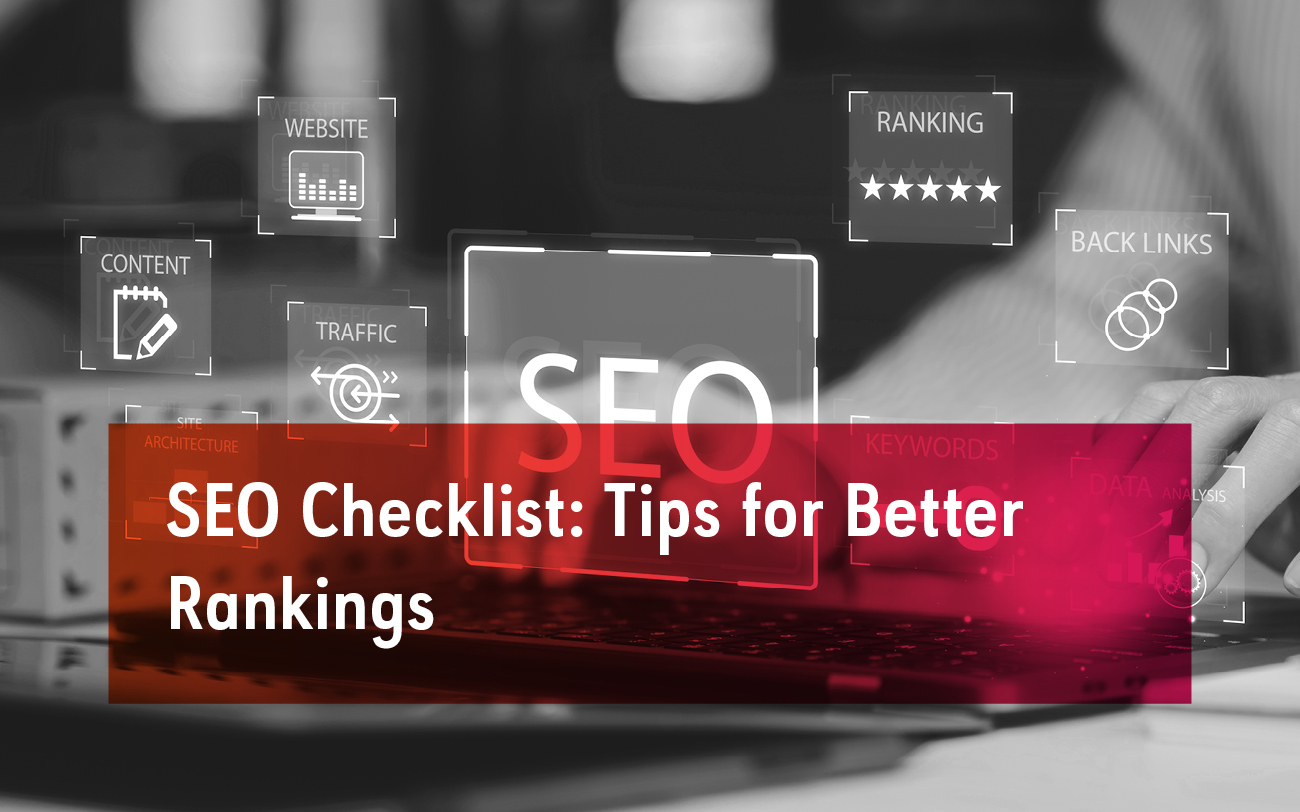SEO for biotech companies: how to reach a niche target audience

Today, Google is the first point of contact when searching for products or services. With just a few keystrokes, we gain access to unlimited information – often optimised for mobile devices, so that knowledge literally lies in our hands. Through search engine optimization (SEO), companies can ensure that they reach their target audience – and thus increase the chance of sales. Why should it be any different for the biotech industry?
However, biotech companies face their very own challenge in digital marketing: They offer specialised products and services – from chemical reagents to diagnostic kits and laboratory instruments to contract research and manufacturing. The target audiences – researchers, biologists, medical professionals, pharma managers, and decision-makers – must be specifically addressed. Unfortunately, traditional marketing strategies often are not enough for this.
Here, SEO can play a pivotal role: It enables biotech companies to stand out in a specialised market environment – efficiently and cost-effectively. So, let’s look at effective SEO strategies, tailored especially for biotech companies and start-ups, to help them reach their niche target audience.
Table of contents:
- Creating a SEO-relevant keyword list for biotech
- Write high-quality, informative, and engaging content for better SEO
- Smart Schema markups to improve visibility
- Build authority with highly reputable backlinks
- Technical SEO investments for your biotech website
- Increasing conversion rates with social proof and customer reviews
- Strengthening SEO by establishing yourself as a thought leader
- Continuous monitoring and optimisation of your life science SEO
- Conclusion
Download our free SEO measures checklist right away!
We have created a comprehensive SEO checklist.
Download it now and read it later:
1. Creating a SEO-relevant keyword list for biotech
Keyword research is a cornerstone of SEO. It helps optimize your website content so that it reflects the terms and phrases your target audience is searching for. This way, you better understand their needs, desires, and challenges – and at the same time, help search engines better index and rank your content.
Here are some tips to strengthen your biotech keyword research:
- Conduct thorough research on relevant life science terms.
- Focus on scientific terms, product names, or frequently asked questions.
- Define a primary keyword and create a list of secondary keywords.
- Skilfully integrate these keywords into your website content – primary keyword in the H1, secondary keywords in about 30–50% of the H2 and H3 headings.
- Tools like Google Keyword Planner, Ahrefs, and SEMrush support you to find relevant biotech keywords.
At vierviertel, for example, we work with Sistrix to create comprehensive keyword lists for our biotech clients and optimize their websites with SEO-compliant biotech keywords.
Don’t forget: LSI keywords (Latent Semantic Indexing) – words closely related to your main keyword – can significantly boost your SEO relevance.
Here’s a detailed article about keywords if you are just starting out and need more help with biotech keyword research.
2. Write high-quality, informative, and engaging content for better SEO
Anyone who studies biology is used to reading scientific articles and continually educating themselves. Similarly, the content on your biotech website should be well-founded, SEO-optimised, and accessible.
This way, search engines can assess your authority and expertise on a given topic, making your website the main source for related queries.
This includes:
- Providing content that appeals to a broad audience with varying levels of expertise.
- Avoiding technical jargon and unnecessary abbreviations that only complicate already complex topics.
- Maintaining an engaging writing style that encourages readers to continue reading.
In addition to blog articles, whitepapers, posters, and FAQs can also complement your content strategy. High-quality citations, infographics, and strategically placed call-to-action (CTA) elements round out the perfect SEO content.
Need help creating high-quality content that's informative as well as invigorating?
We're at your service!
3. Smart Schema markups to improve visibility
Before starting an experiment, you must review the protocol to ensure you have all the reagents and equipment to successfully complete it. Similarly, schema markup helps search engines better understand the structure and content of your website.
The result:
- Better presentation of your content in search results (e.g., as rich snippets).
- Higher click-through rates.
- Faster access to relevant information by users.
Use the Schema.org library to implement standardised markups on your biotech website.
4. Build authority with highly reputable backlinks
Backlinks are to the digital world what literature references are to scientific papers: a sign of relevance and credibility.
To build backlinks for your biotech SEO strategy:
- Publish guest articles on other biotech websites.
- Create shareable content like infographics.
- Collaborate with academic institutions or industry media.
- Publish in peer-reviewed scientific journals.
High-quality links strengthen your SEO visibility and your brand authority.
5. Technical SEO investments for your biotech website
A technically flawless website is crucial for effective life science SEO. Websites cluttered with irrelevant content, hard to navigate, or lacking a secure connection (https) are often abandoned by visitors. This signals to search engines that visitors did not find what they were looking for – which can negatively impact your biotech website’s SEO.
A technically sound website is the backbone of a successful SEO strategy:
- Mobile optimisation and fast loading times are a must.
- Ensure a secure connection (HTTPS).
- Maintain a clear and clean URL structure.
- Use tools like Google Search Console to identify crawling errors or broken links early.
A positive user experience (UX) ensures that visitors stay longer – an important ranking factor.
Feeling overwhelmed with everything you need to do for your life science SEO? Download our SEO checklist to help you keep track of your tasks.
6. Increasing conversion rates with social proof and customer reviews
Whether privately or in business – we rely on recommendations. The principle of social proof also works in B2B and can significantly strengthen your life science SEO.
Social proof is an easy way to show that your product or service is not only preferred by other professionals in the biotech industry but also highly recommended.
Case studies, expert opinions, client logos, social media posts from influential professionals and testimonials when displayed tactically on your website, or mentioned in its content, can boost credibility and drive engagement thus helping your life science SEO plans.
7. Strengthening SEO by establishing yourself as a thought leader
Many biotech companies underestimate the power of thought leadership. Most believe it is sufficient to refer to research articles featuring their biotech products or services.
While this is useful for a subset of the audience, thought leadership opens the door to new readership segments.
Anyone who regularly simplifies scientific findings into understandable blog posts or LinkedIn articles reaches new target groups and sustainably improves SEO visibility.
Running a blog that covers the latest developments, breakthroughs, and trends in biotech drives organic traffic and builds trust.
Even though LinkedIn articles don’t directly influence SEO, collaborating with industry leaders builds trust and authority. Linking to resources on your website extends your reach into your LinkedIn community.
8. Continuous monitoring and optimisation of your life science SEO
SEO is not a one-time task, but an ongoing process. To get the best out of your efforts, you must track metrics that indicate how successful your actions are and whether further optimisation is needed.
Use analytics tools like Google Analytics and Google Search Console to monitor:
- Organic traffic – the number of visitors coming to your site via search engines without clicking paid ads.
- Bounce rates – the percentage of visitors leaving your site after viewing just one page.
- Keyword rankings – the position your site holds in search results for specific keywords.
- Backlinks – search engines value high-quality backlinks; tools like Seobility can assess their quality.
Love data and analysis?
Download our eBook, where we list key performance indicators you should track and share important tips on optimising your biotech website.
Conclusion
For biotech companies and start-ups, implementing a solid SEO strategy can help manage the complexities of reaching a niche audience. By focusing on targeted keywords, quality content, technical optimisation, and continuous improvements, you can build a strong online presence and connect with the right audience.
Remember: SEO is an investment that pays off over time – start today to secure your company’s digital future.
Would you rather leave it to the experts? Our biotech SEO specialists are happy to assist you. Schedule an appointment now!





